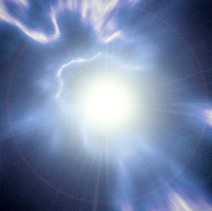For a few decades, the coronal heating has been a complete mystery to astronomers: why is the Sun’s corona temperature millions of degrees higher than that of the surface?
So far, two theories were the most likely candidates: wave heating (waves carry energy from the solar interior to the solar corona) and magnetic reconnection (electric currents in the solar corona collapse, releasing energy as heat and wave energy). Though, none of them has been able to account for this phenomenon.
Another possibility has been considered: plasma jets (ionized gas rising into the corona). Past observations suggested them to be too cool for coronal heating, however more recent observations showed that a fraction of the jets can reach corona-like temperatures of about a million degrees.
Bart De Pontieu and his colleagues were able to achieve these measurements thanks to the Japanese Hinode space mission and NASA’s Solar Dynamics Observatory (SDO). These observations were reported in the 7 January issue of Science.
However, other solar physicists – and De Pontieu himself – say that this is not the end of the corona heating mystery, but this is a new phenomenon which deserves more attention and further observations.
